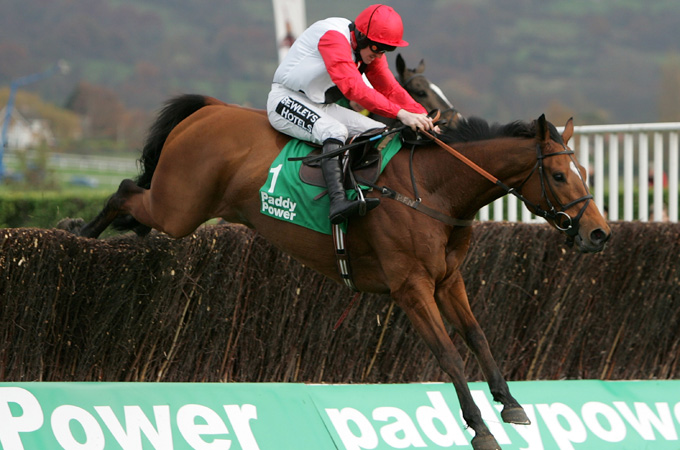Grand National to be made safer
Following the death of two horses at this year’s race, Aintree executives have responded to animal rights campaigners.

 |
| Ornais pictured above and Dooneys Gate both died at the 2011 Grand National at Aintree [GALLO/GETTY] |
Aintree is taking steps to lower the number of horse deaths at the British Grand National, and will change the course following two fatalities during this year’s running of the world’s toughest steeplechase.
The three-day meeting averages three fatalities each year, and 24 horses have died during the showpiece race since 1984. This year’s race saw only 19 of the 40 starters finish, and Ornais and Dooneys Gate died after falling.
Keep reading
list of 4 items‘Mama we’re dying’: Only able to hear her kids in Gaza in their final days
Europe pledges to boost aid to Sudan on unwelcome war anniversary
Birth, death, escape: Three women’s struggle through Sudan’s war
The Grand National has become a popular target for animal rights groups and has endured campaigns to have the event banned.
Aintree executives and the British Horseracing Authority responded to widespread criticism of this year’s events, by initiating a review.
The first and fourth fences and Becher’s Brook were identified as the greatest contributors to all incidents since 1990. Now modifications to each of these fences have been recommended to enhance safety in the future.
Lower landings
However, the review concluded that the field size of 40 horses was not a contributing factor to the accidents.
Becher’s Brook is one of several fences noted for their severity, as a 5-foot (1.5-meter) high fence is followed by a steep 7-foot (2.1-meter) drop on the landing side. That drop will now be reduced by several inches.
The landing after the first fence will also be made easier, while the fourth fence will be lowered by two inches (5 centimeters).
|
“We never stand still on safety and it is our No. 1 target to reduce manageable risk without reducing the unique nature of a race which is part of the fabric of the nation” Aintree managing director Julian Thick |
Recommendations are also set to be made for the creation of a new post-race washdown and cooling area off the course.
Organisers are also set to allow the shortening or removal of the pre-race parade in warm weather conditions.
“We never stand still on safety and it is our No. 1 target to reduce manageable risk without reducing the unique nature of a race which is part of the fabric of the nation,” Aintree’s managing director Julian Thick said.
Senior jockeys and trainers, as well as the RSPCA and World Horse Welfare were consulted.
“Racing is never risk-free for horse or jockey, but by making these changes, Aintree is demonstrating they do care about horse welfare,” World Horse Welfare deputy chief executive Tony Tyler said.
“We hope next year’s race will be the safest yet.”
The BHA’s formal review will not be released until October, although it is expected that the fences will have been changed by the time of the track’s December meeting.